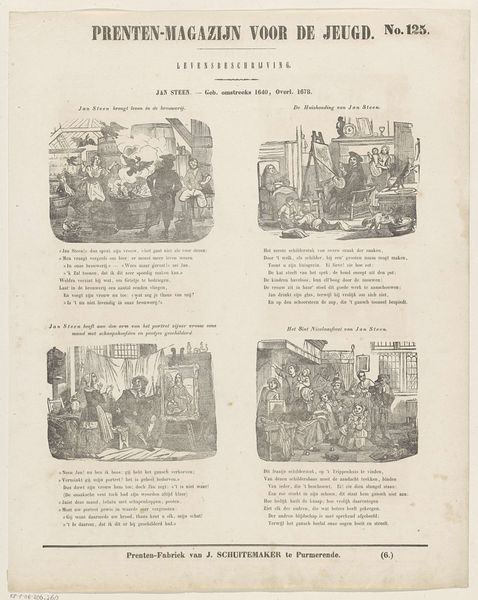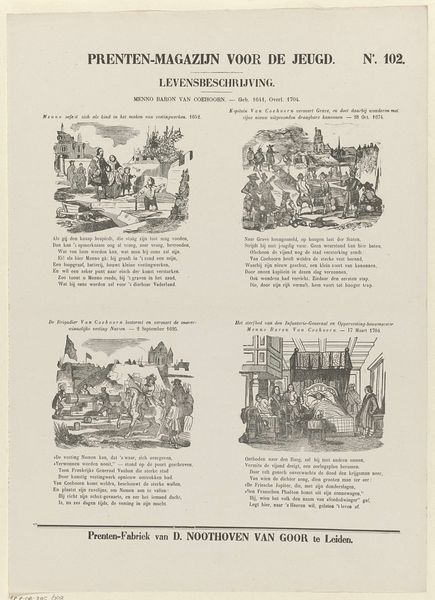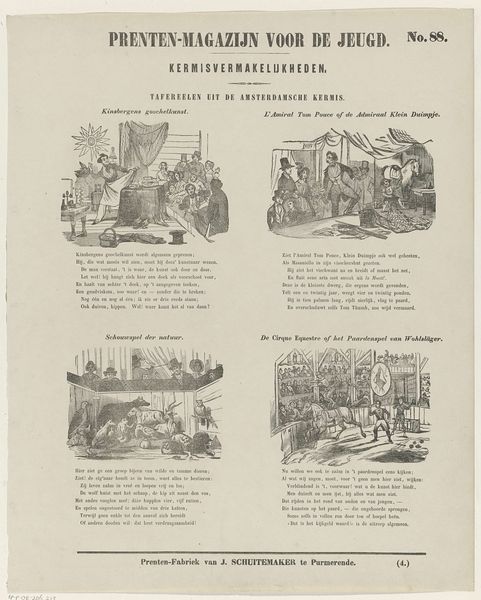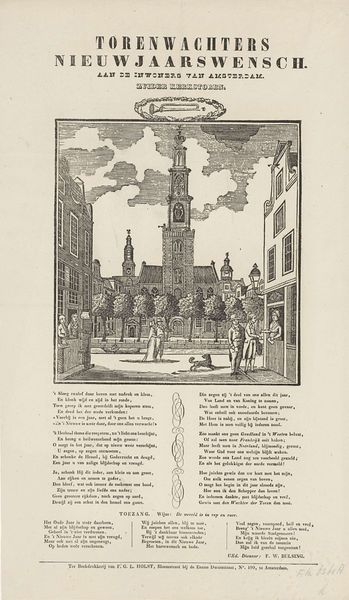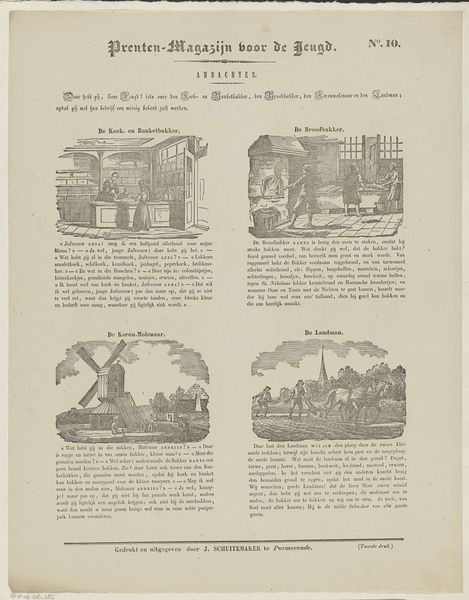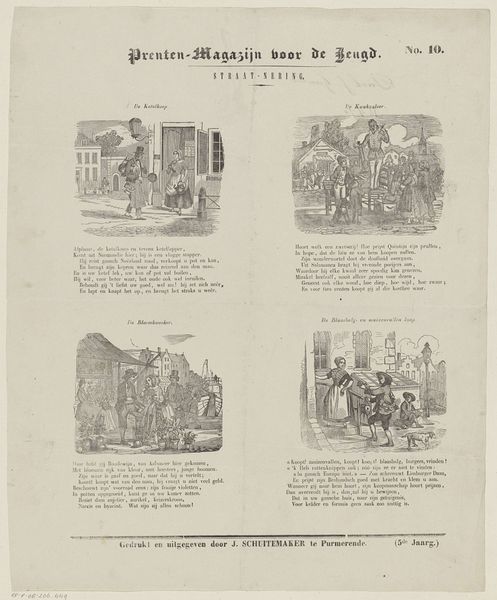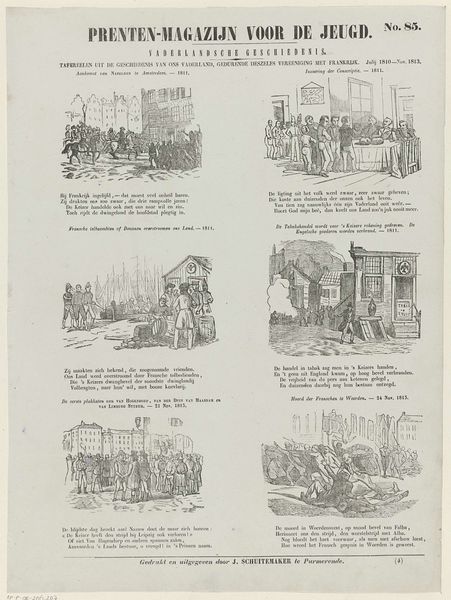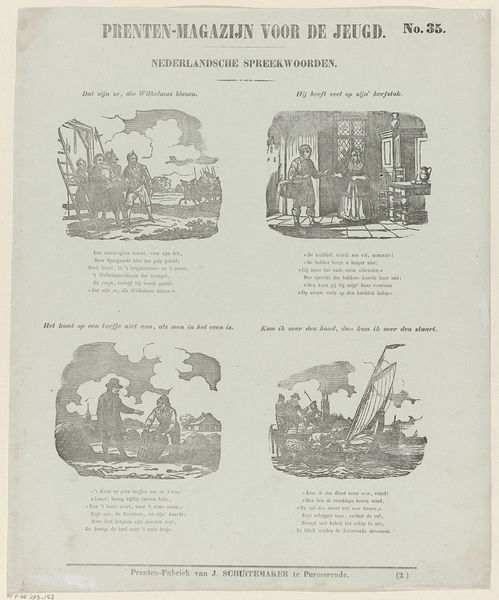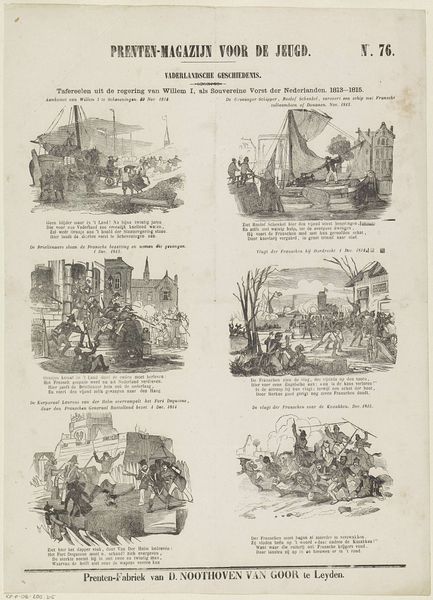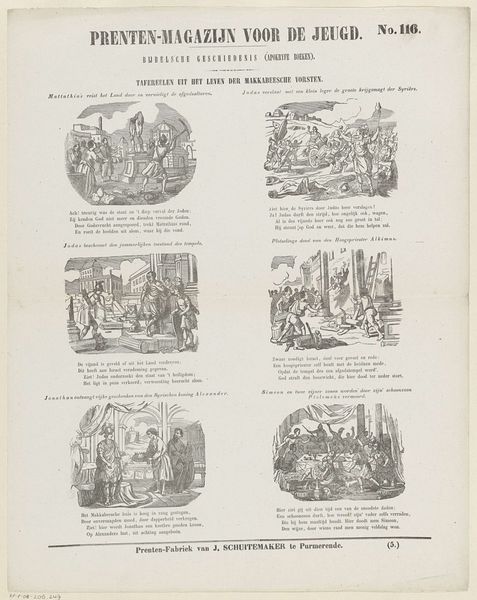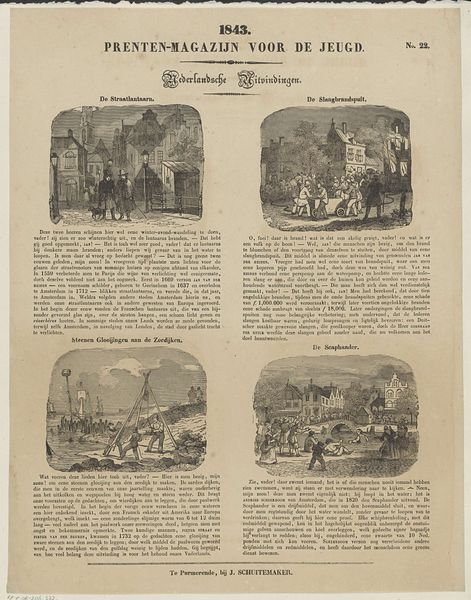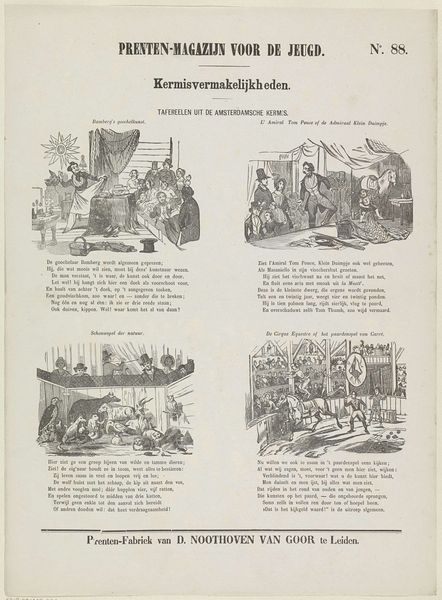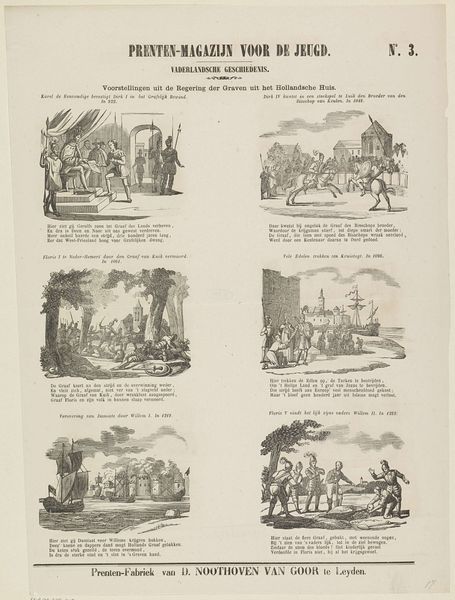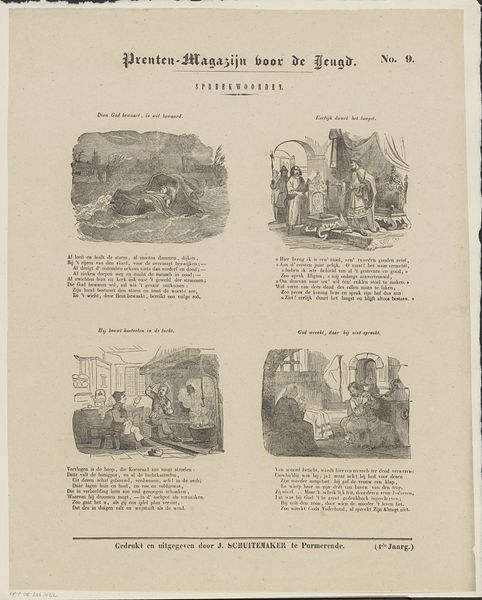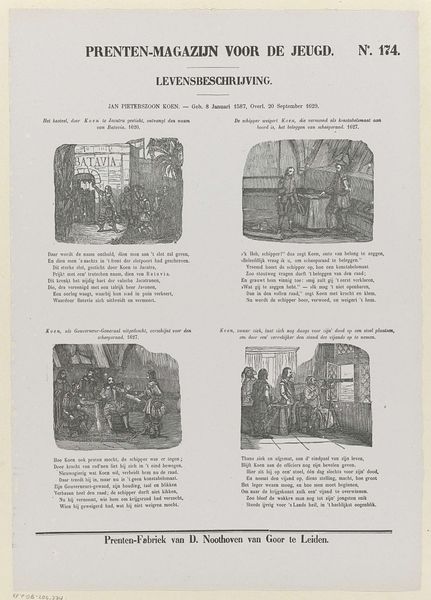
Nieuwjaarswens van de lantaarnopstekers van Amsterdam voor het jaar 1857 1856 - 1857
0:00
0:00
Dimensions: height 338 mm, width 210 mm
Copyright: Rijks Museum: Open Domain
Editor: Here we have "Nieuwjaarswens van de lantaarnopstekers van Amsterdam voor het jaar 1857," or "New Year's Wish of the Lamplighters of Amsterdam for the year 1857." It’s an etching by Jacob Coldewijn, dating from around 1856-1857. I’m immediately drawn to how it depicts an urban scene, but also seems to be making a broader commentary through the inscription. What do you see in this piece, considering its historical and cultural context? Curator: It's a fascinating example of how art functioned as a form of social address. This print wasn't just a pretty picture; it was a New Year's greeting from the lamplighters themselves. It positions these workers as integral to the city's functioning and even its moral fabric. Consider the industrial backdrop contrasting with the classical, almost romantic imagery, reflecting the transformations Amsterdam was undergoing. It prompts us to ask: how does this image contribute to our understanding of labor and urban identity in mid-19th century Amsterdam? Editor: So it's like they're using the print to assert their importance? And the poem below seems to add another layer. Curator: Precisely! They’re publicly reminding the citizens of their value and contribution, particularly as new technologies and urban developments were shifting traditional roles. What does the presence of a poem, directly addressed to the citizens, tell us about the intended audience and the function of the artwork? Was this distributed widely, perhaps hung in homes? Editor: It makes it very accessible, more than just an image. Almost like a piece of community propaganda, hoping to be appreciated. Curator: Indeed! And it is that blending of image and text, coupled with its direct social function, which positions the work within the broader discussion on the role of art and visual media in shaping civic identity and collective memory. Editor: This makes me see it beyond just an old print; it’s a historical document reflecting the lamplighters’ place in Amsterdam. Curator: And also art’s function beyond aesthetics. A truly successful dialogue, if I may say so!
Comments
No comments
Be the first to comment and join the conversation on the ultimate creative platform.
